Difference between revisions of "EWR VJ 101C"
m |
|||
| Line 18: | Line 18: | ||
|title=History | |title=History | ||
|content= | |content= | ||
| + | |||
| + | |||
| + | During the Cold War the West German Airforce expected their airfields to be a primary target in any conflict with the Soviets. To counter this they planned to adopt a mobile strategy with heavy use of new VTOL aircraft that in a time of war could be operated from makeshift runways or the autobahn. To fulfil this new strategy Heinkel (VJ 101A), Messerschmitt (VJ 101B) and Bolkow all submitted different designs for a new VTOL fighter/interceptor. Instead of making the three companies compete for the production contract the Defence Ministry encouraged them to work together, so in 1959 the three of them joined together to create the EWR (Entwicklungsring Süd) consortium. The new jointly designed VJ 101C incorporated the best features from the original concepts, with Heinkel's wing mounted engine pods and Messerschmitt's fuselage lift fan being combined to provide the aircraft's VTOL capability. | ||
| + | |||
| + | In early 1960 a rudimentary test rig was built to test the feasibility of the VTOL engines, a skeletal prototype was then built and in May 1961 underwent testing on a telescopic column. Work continued on improving this prototype and in March 1962 it was able to fly freely on its own. With the success of these tests a full prototype (X-1) was built and flew for the first time on April 10th 1963 and the first transition from vertical to horizontal flight was achieved on September 20th 1963. On September 14 1964 the X-1 prototype crashed and was destroyed during take-off, it was later found that a roll rate gyro had been installed backwards causing the autopilot to malfunction. A second prototype (X-2) completed in mid 1965 and along with fixes to the autopilot it also featured newer engines fitted with afterburners, it achieved its first VTOL flight on October 22th 1965. Testing of the X-2 prototype continued for several more years and plans were made for construction a larger and more advance EWR VJ 101D design, however changes in strategic requirement meant that interest in the EWR VJ 101 diminished and in 1968 the project was cancelled. The X-2 prototype survives to this day and can be found in the Deutsches Museum in Munich. | ||
| + | |||
| + | Following the cancellation of the VJ 101 EWR continued work on several conceptual designs (The AVS project in partnership with Boeing and the EWR A 400 STOL Design Study), these slowly evolved the original VJ 101 design and culminated into the Panavia Tornado. | ||
| + | |||
| Line 40: | Line 48: | ||
|content= | |content= | ||
image:vj101.jpg{{!}} | image:vj101.jpg{{!}} | ||
| + | image:vj101_plan.jpg{{!}} | ||
| + | image:vj101_01.jpg{{!}} | ||
| + | image:vj101_02.jpg{{!}} | ||
| + | image:vj101_03.jpg{{!}} | ||
| + | image:vj101_04.jpg{{!}} | ||
| + | image:vj101_05.jpg{{!}} | ||
}} | }} | ||
Latest revision as of 11:14, 20 March 2017
| ||||||||||||||||||||||||||
In early 1960 a rudimentary test rig was built to test the feasibility of the VTOL engines, a skeletal prototype was then built and in May 1961 underwent testing on a telescopic column. Work continued on improving this prototype and in March 1962 it was able to fly freely on its own. With the success of these tests a full prototype (X-1) was built and flew for the first time on April 10th 1963 and the first transition from vertical to horizontal flight was achieved on September 20th 1963. On September 14 1964 the X-1 prototype crashed and was destroyed during take-off, it was later found that a roll rate gyro had been installed backwards causing the autopilot to malfunction. A second prototype (X-2) completed in mid 1965 and along with fixes to the autopilot it also featured newer engines fitted with afterburners, it achieved its first VTOL flight on October 22th 1965. Testing of the X-2 prototype continued for several more years and plans were made for construction a larger and more advance EWR VJ 101D design, however changes in strategic requirement meant that interest in the EWR VJ 101 diminished and in 1968 the project was cancelled. The X-2 prototype survives to this day and can be found in the Deutsches Museum in Munich.
Following the cancellation of the VJ 101 EWR continued work on several conceptual designs (The AVS project in partnership with Boeing and the EWR A 400 STOL Design Study), these slowly evolved the original VJ 101 design and culminated into the Panavia Tornado.
References
| 1930 - 1940: Pre-War |
1940 - 1942: Early-War |
1942 - 1944: Mid-War |
1944 - 1945: Late-War |
1945 - 1960: Post-War |
1930 - 1960: Total-War |
|
| Buildable | Yes | Yes | ||||
| Bonus Crate | Yes | Yes |
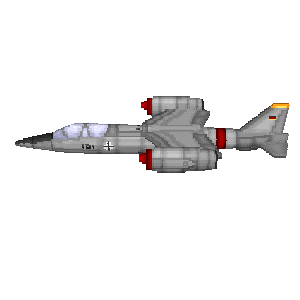
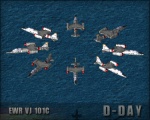
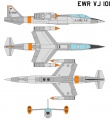
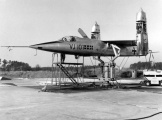

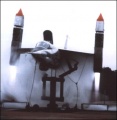
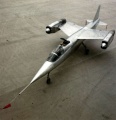

Enable comment auto-refresher